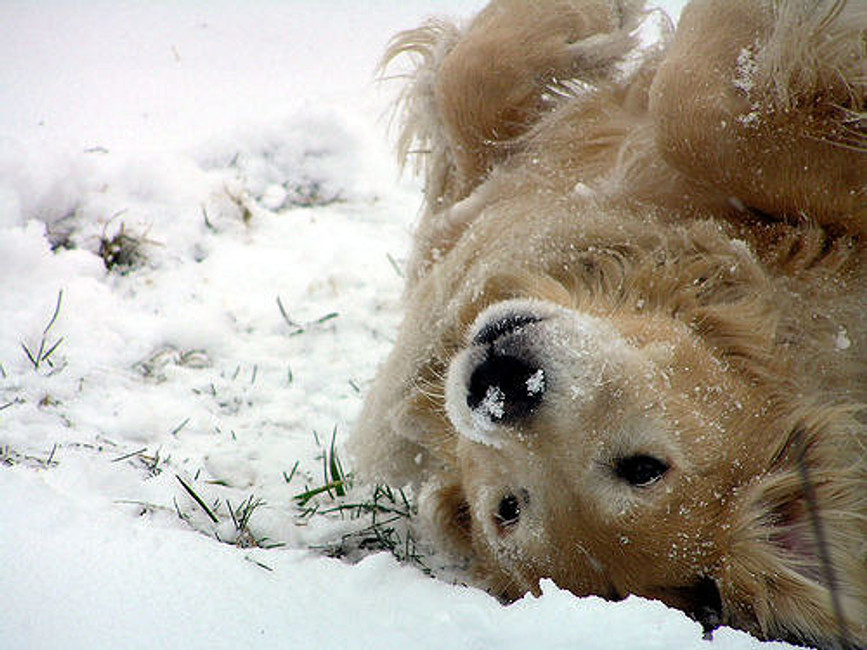
Your Dog's Coat is Not Enough
As winter approaches, many people are beginning to prepare for the cold weather by cranking that thermostat up and pouring cup after cup of hot chocolate. As humans it is relatively easy for us to stay warm if we have all of the necessities, and the same thing goes for your dog. Here are a few tips and things to think about to make sure that man’s best friend stays nice and toasty and away from temperature related health conditions like frostbite and hypothermia all winter long.
Your dog’s coat plays an extremely important role in keeping your pet warm by trapping warmth and shielding from the cold but depending on your dog’s breed, he or she may need extra protection. Dog breeds like that of the Bernese Mountain Dog have thick coats that shield them well from most winter weather and do not need anything extra while dogs with thin coats, like Chihuahuas, require a supplementary sweater or coat to ensure their body temperature does not drop too low according to the ASPCA. When shopping for a sweater or coat make sure to purchase one that reaches from high on the neck all the way to the base of the tail while covering the belly, these are the most effective at combating cold temperatures. (Dogs Naturally Magazine).
For dogs with thick coats, a simple trim is really the only thing needed. Trimming excess fur prevents the buildup of ice, salt crystals and deicing chemicals that can be picked up during walks on public streets. Deicing agents and chemicals used on streets are toxic and can cause irritation if left on the skin or fur for too long. For this reason, it is best to bring a towel on long walks to dry your pet’s feet and stomach and to remove ice, salt and deicing chemicals as they build up. Towels are the best option for removing these things because it is best to refrain from washing your pet during the winter as much as possible. Washing your pet repeatedly during the winter can lead to dry and flaky skin and further irritation by removing essential, protective oils in your pet’s coat according to the ASPCA.
The next thing to think about is your pet’s food. Like humans, dogs burn calories to keep their bodies at the optimal temperature. This means as temperatures drop, dogs must expend more energy to stay warm. For this reason, it is a good idea to feed your pet a little extra during those really cold winter months so you can be sure they have enough energy to stay warm. (ASPCA).
Lastly, it is important that your dog has a warm, draft free place to sleep. If you have an outdoor dog, the best option is to bring him or her indoors for the winter. This is because it is much more difficult to monitor your pets and their body temperature frequently when they are outside. If this is not an option for you, your pet must have a warm, insulated and preferably heated shelter to ensure he or she can stay warm throughout the night. A thick or insulated bed helps to retain body heat while sleeping; heated blankets for extra warmth are always a good idea. To protect your pet’s food and water from freezing, it is best to purchase heated bowls.
If your dog stays in the house most of the day, it is still good to have an insulated bed or padding that your pet can sleep on. Dogs Naturally Magazine says to “place your dog’s bed in a warm spot away from drafts, cold tile or uncarpeted floors, preferably in a favorite spot where he sleeps every day so that the area doesn’t feel unfamiliar.” As dogs will often seek warm places to nap other than their bed, be sure to avoid using space heaters and cover floor radiators to protect your pet from getting burned.
The most important thing to take away from this is to always make sure your dog is comfortable. If it is too cold for you to go outside without a coat, it is probably too cold for your dog to stay out for extended periods of time without protection. Lastly, always make sure to pay close attention to any changes in your pet’s behavior as these may be signs of distress due to chill.

